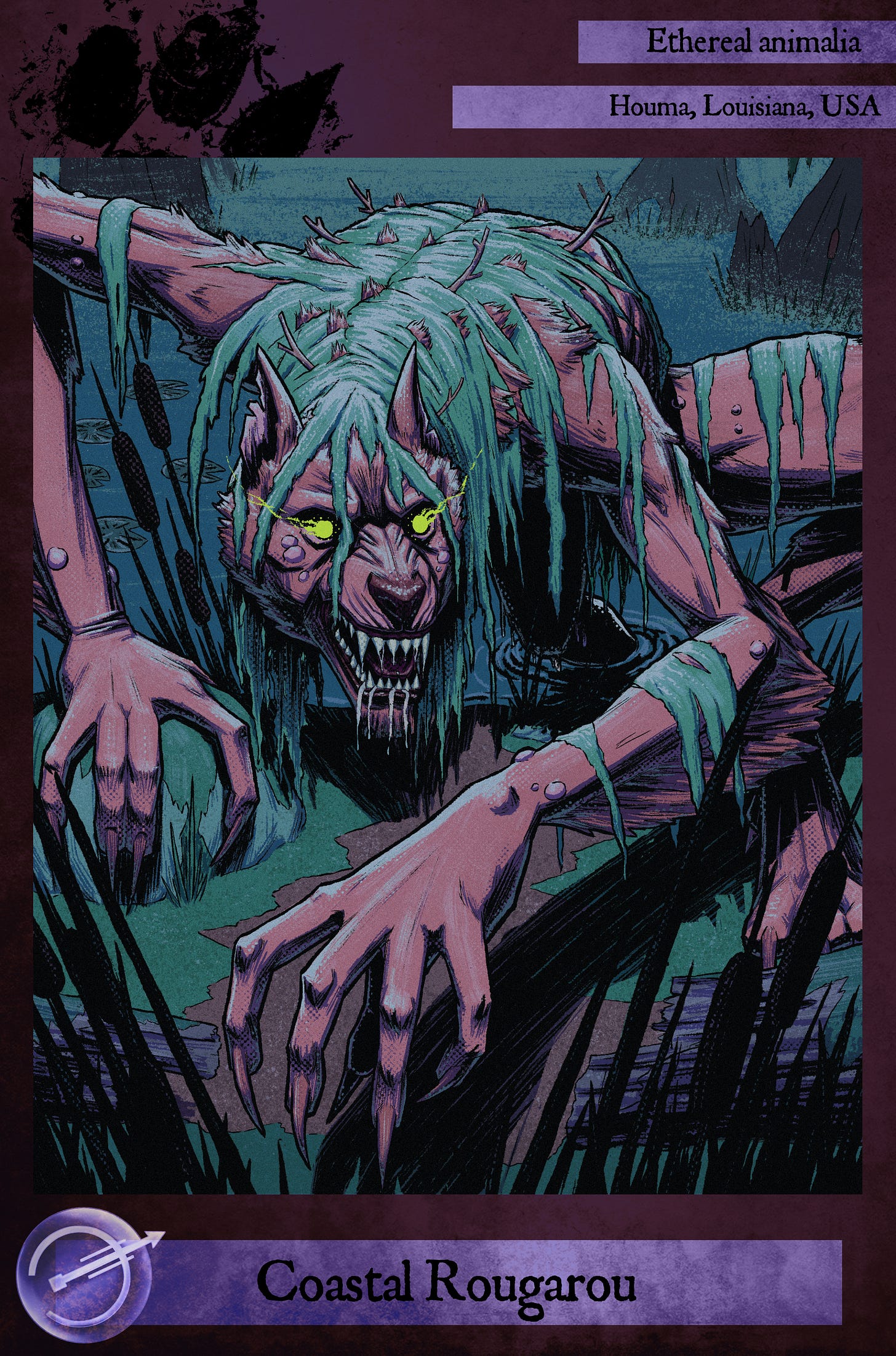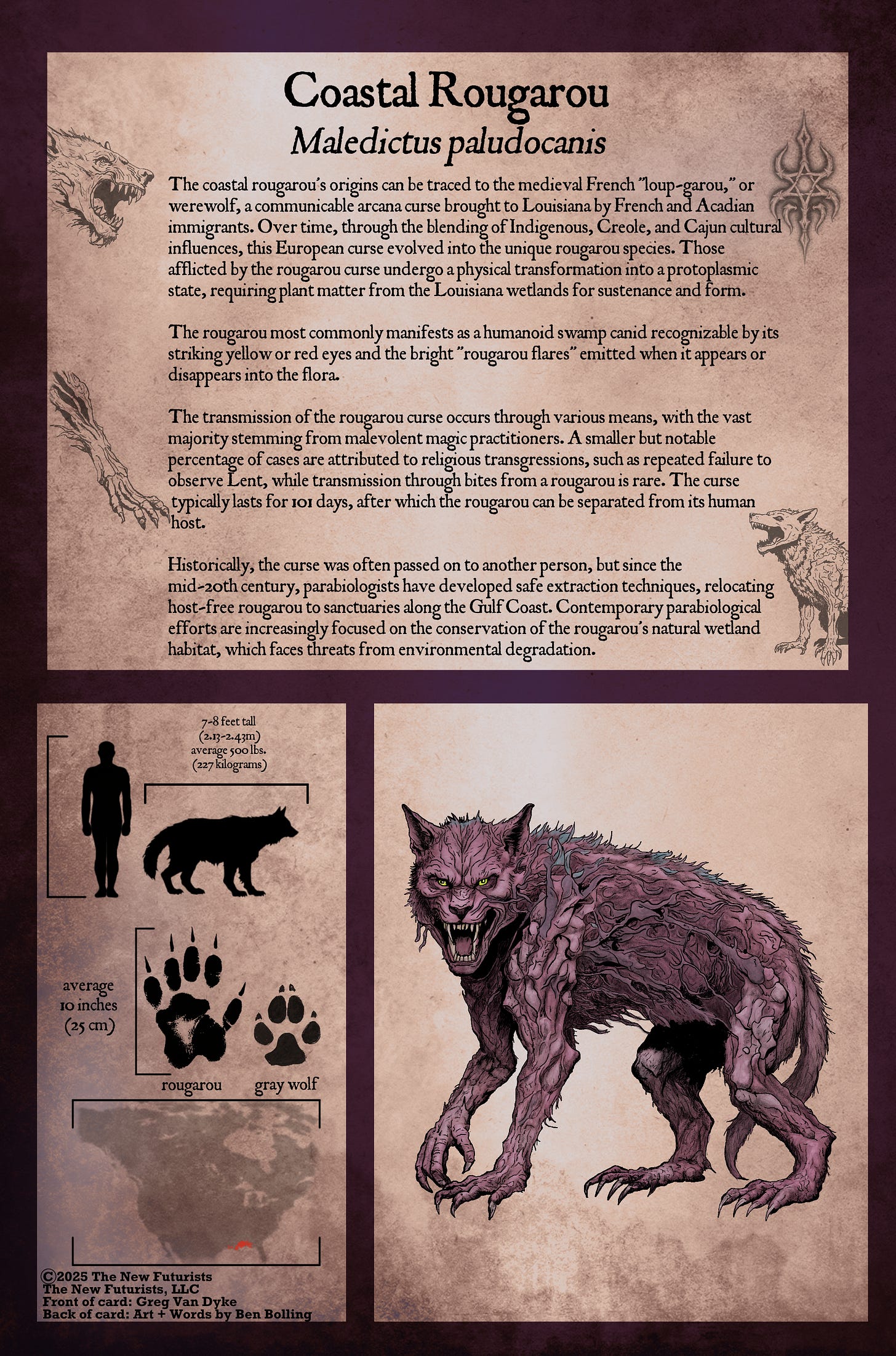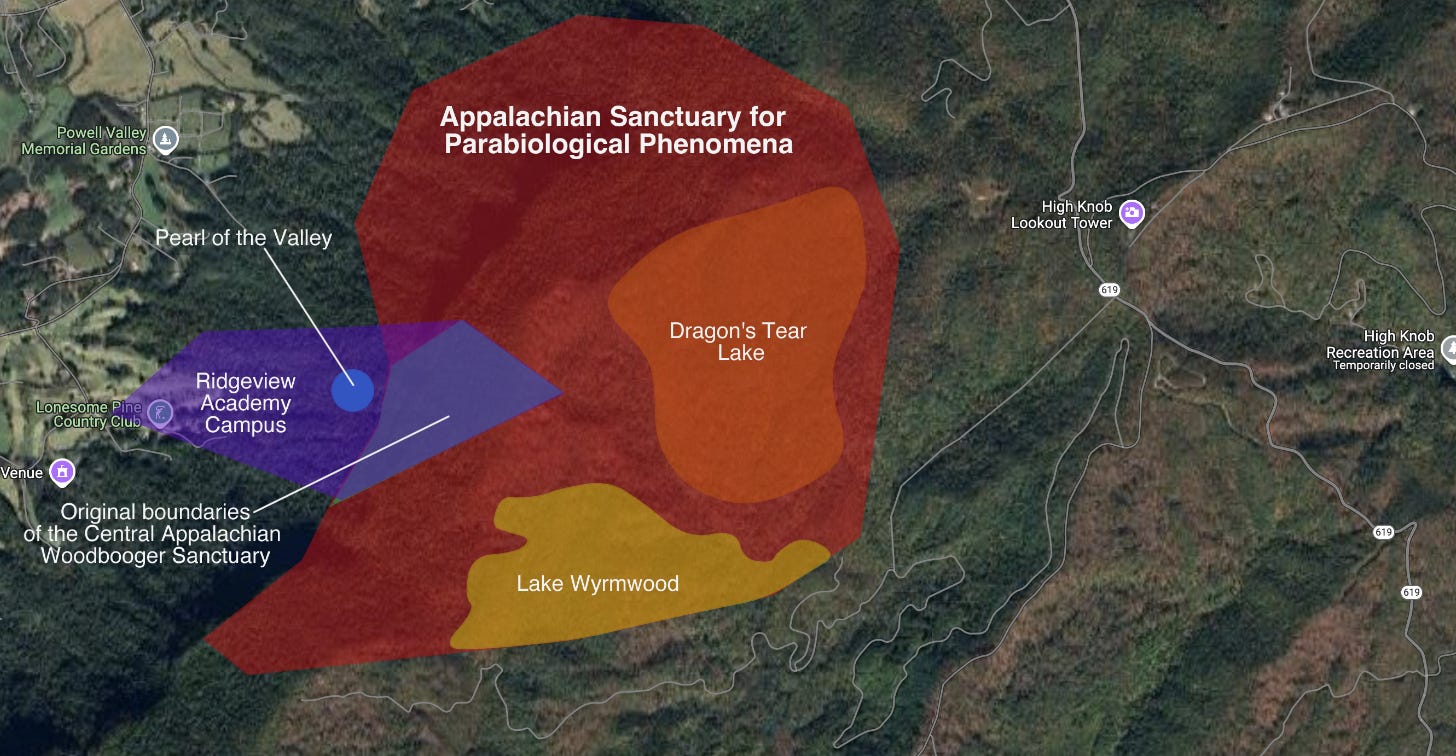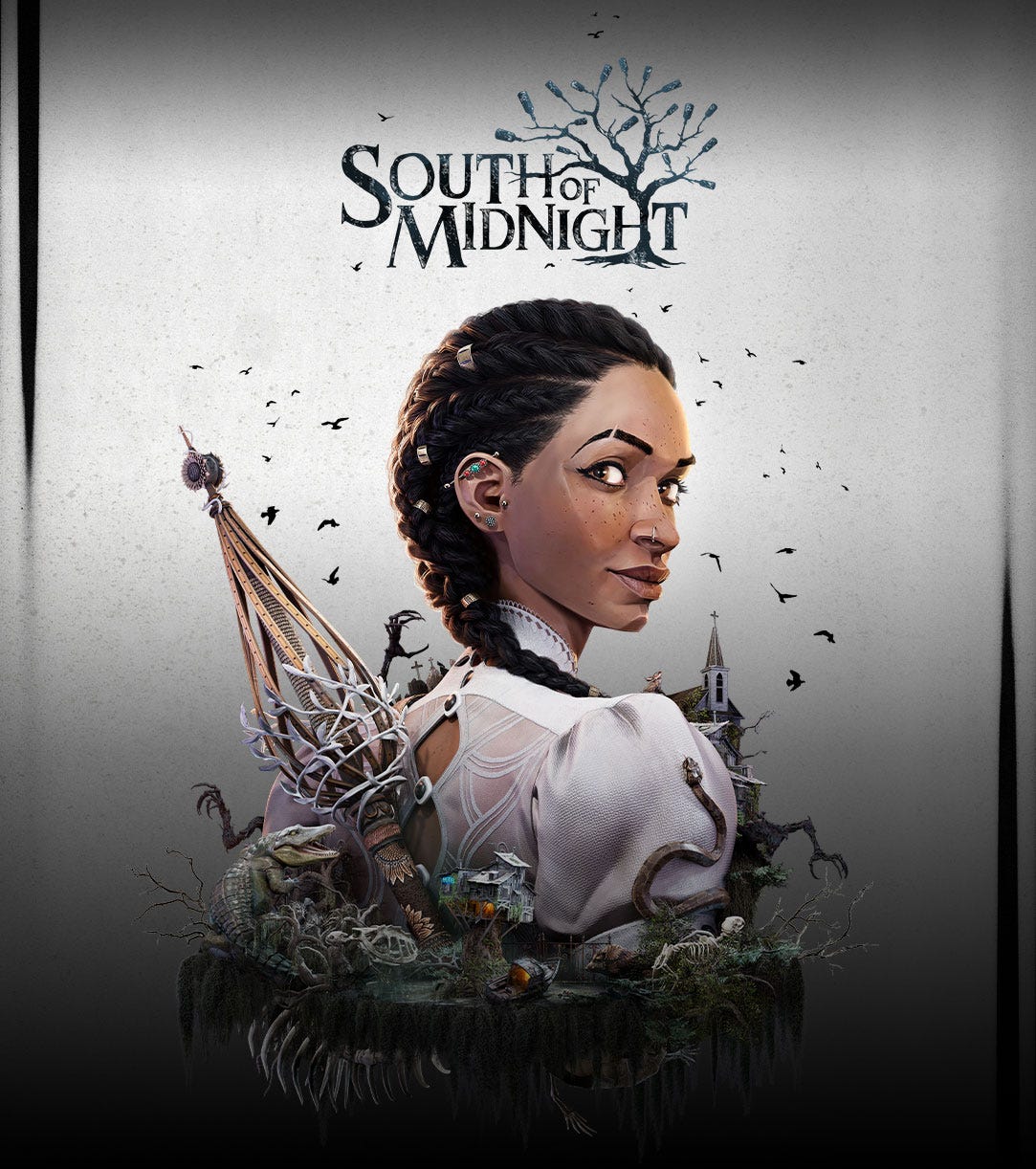Welcome back to the Appalachian Sanctuary for Parabiological Phenomena– popularly known as Cryptid Keep! If you’re joining us for the first time, you can expect updates from our team of world-renowned parabiologists on the third Tuesday of every month.
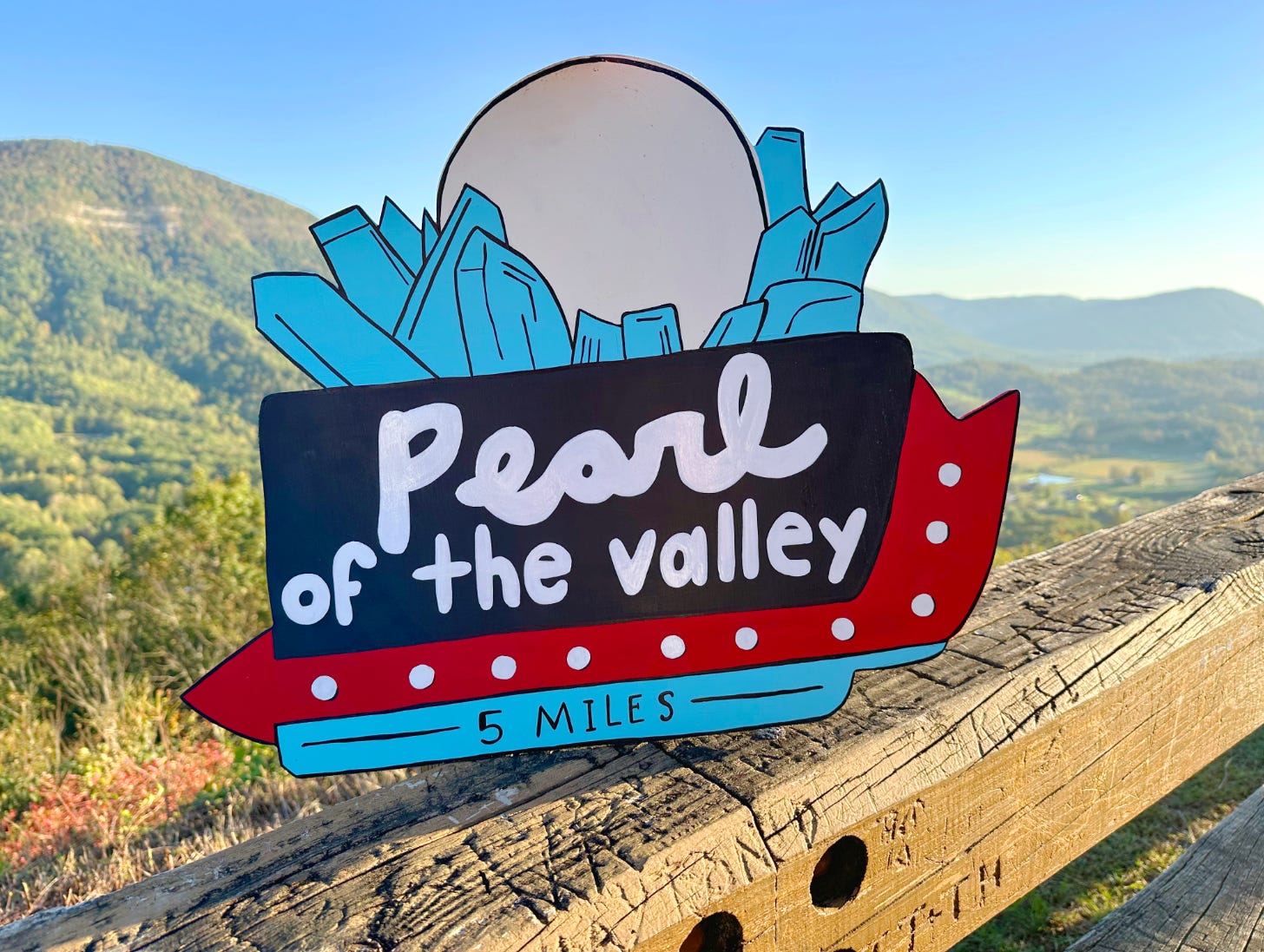
Nestled in the mountains of Pearl Valley in beautiful Wise County, Virginia, the Appalachian Sanctuary for Parabiological Phenomena is an international, nonprofit organization committed to saving supernatural species worldwide by combining our expertise in parabiological care and education to develop sustainable supernatural conservation solutions.
In 1965, the famous husband-and-wife parabiologist team of Séraphine and Augustin Ferrand approached the Defender about relocating a group (or “malison”) of coastal rougarou from Louisiana to Cryptid Keep.
Construction on the rougarou habitat began in 1966 in the naturally swampy area between Dragon’s Tear Lake and Lake Wyrmwood, and was completed the following year.
The first malison of coastal rougarou were relocated to the Appalachian Sanctuary for Parabiological Phenomena in the summer of 1968. Caretakers and magical wardens have managed a healthy rougarou population for nearly 60 years.
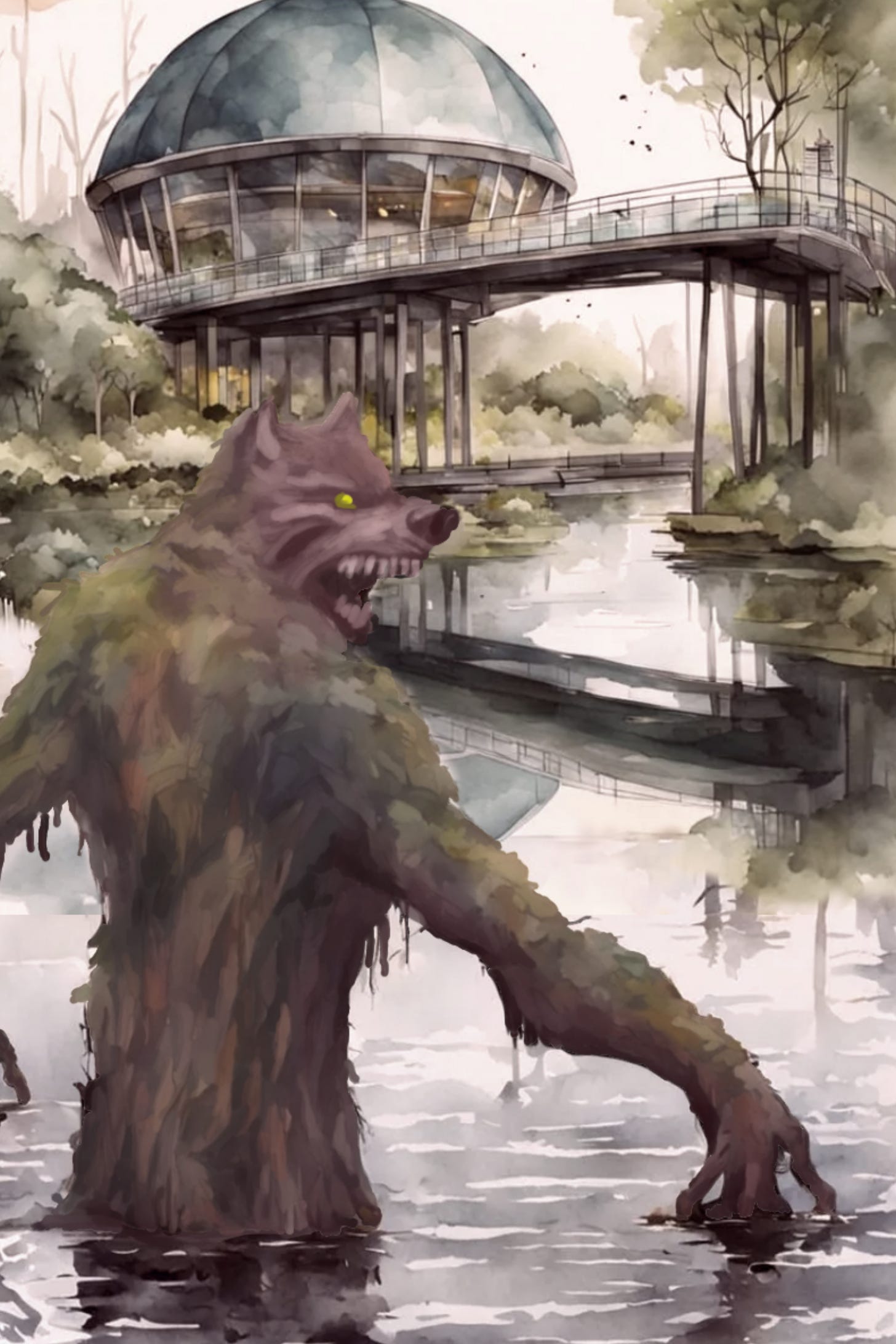
Well, how about that? Did you learn something, gentle reader? I know I sure did.
Here are some flash facts about rougarou lore that I learned during my research that didn’t make it into the trading card materials:
The "loup-garou" legend arrived in North America with a strong cultural imprint from France. In the absence of a significant wolf population in Louisiana , the legend did not simply fade away. Instead, the form of the creature changed, adopting characteristics of other local (often canine or nocturnal) animals like dogs or owls, or becoming more ambiguously terrifying. This resilience suggests that the function of the legend—as a cautionary tale, an explanation for the unknown, or an embodiment of communal fears—was more critical than the specific animal form it took.
The uncertainty of the rougarou's appearance, especially the inclusion of owl-like traits, points towards a fascinating process of syncretic evolution. The original French legend, centered on the wolf, appears to have encountered and absorbed or resonated with pre-existing Indigenous beliefs. One source I read explicitly notes that the rougarou took on "aspects of local Native American cryptids, such as a legendary Choctaw shapeshifting owl-witch.”
Brace yourself for some next-level English teacher nerdiness: the transformation from "loup-garou" to “rougarou" is a fascinating example of linguistic adaptation. This shift is attributed to a common phonological process known as rhotacism or assimilation. In this phenomenon, when two liquid consonants like 'l' and 'r' appear in close proximity within a word, their placement can shift over time. This process is particularly common in languages that are primarily transmitted orally, as Louisiana French was and, in many communities, continues to be. It is worth noting that both "loup-garou" and "rougarou" are, even today, sometimes used interchangeably in Louisiana, referring to a broadly similar concept of a cursed, shapeshifting being.
A distinctive element in rougarou lore is the "rule of silence." If an individual encounters a rougarou or, perhaps more perilously, discovers its human identity, they are bound by a strict code of secrecy. They must remain silent about the encounter or their knowledge for a specific period, typically a year and a day or, in some versions, 101 days. If they speak of it before this period has elapsed, they risk becoming the next rougarou, or they may break the chance for the original rougarou to be freed from its curse. If, however, the silence is maintained for the requisite duration, the curse can be broken for the afflicted rougarou, and the witness remains safe.
If you’re looking for protection against the rougarou, you’re in luck: I’ve got suggestions!
Salt is a good bet. Throwing salt on a rougarou repels the creature and in some legends causes it to burst into flames!
Frogs can help. It seems like a highly irrational problem for a swamp-dwelling creature to have, but apparently the rougarou doesn’t like frogs. Frogs are natural rougarou repellent.
Place thirteen small items such as pennies, beans, or nails on your doorstep. Rougarou can’t count past 12, so you’ll keep the beast busy until sunrise when they typically retreat to the swamps.
I forgot to mention during last month’s Woodbooger post, but there’s a Woodbooger Festival in Norton, Virginia, right up the road from our fictional setting of Pearl Valley. Similarly, Houma, Louisiana hosts Rougarou Fest! It’s really good to know that our parabiological treasures are being celebrated, y’all! Holler at me if you’re down for a cryptid festival road trip.
We are SO excited to feature the work of Greg Van Dyke for this month’s trading card!
Greg loves all things related to visual storytelling, whether it's comics, movies, animation, or a piece of fine art. He is currently working on a creator-owned comic with his creative partner and writer, Jacob Castillo, with whom he started Oddschool Studios. Greg and Jacob recently completed their first issue of The State of Nowhere and are excited to show what they've been working on next. Greg lives in Chattanooga, TN, with his wife, two daughters, and two Boston terriers.
And get this: you’ll get another dose of Greg’s work NEXT WEEK because he’s the cover artist for chapter 3 of American Gothic: The Hand of Poe! Also, our paid and Visionary subscribers should keep scrolling after the paywall to see an alternate version of Greg’s coastal rougarou.
For today’s post, I asked Greg why he chose the rougarou from the list of creatures I circulated among the artists working on this project. Here’s what he wrote:
As a lifelong fan of mythology and monsters, I find cryptids so fascinating, especially the culture surrounding them (often campy in all of the right ways). I think it's so interesting to learn how these legends began, and to hear about various sightings or experiences that led to a collective story and mythology surrounding each of these creatures. I chose the rougarou for two reasons. First, I love a good werewolf (and honestly, who doesn't?). Second, I was super interested in the idea of tying in this new flavor/aesthetic associated with the Low Country. I have recently become a little bit obsessed with art style and overall vibe of a game that just released, called South of Midnight, and this is honestly one of the biggest reasons I wanted to explore the swamp/low country aesthetic, particularly as it relates to a type of creature you typically only see in relation to more typical forests/mountains.
South of Midnight has been getting rave reviews from the gamers in my life, so consider this an official recommendation! I also heard a really good story on NPR about the game’s soundtrack.
Collaborating with Greg on this card was particularly fun because his illustration totally changed the direction of my writing. Originally, my Omniverse lore for the rougarou was a straightforward synthesis of the cryptid mythology I turned up in my research.
But after seeing Greg’s work, I thought about a cryptid panel I went to at DragonCon in Atlanta like 1,000 years ago. The skeptic on the panel said he always asks cryptid enthusiasts two questions: “How do they disappear?” and “What do they eat?” Among some of my friends “What do they eat?” remains a catchphrase whenever someone exhibits particularly acute HANGRY behaviors.
Anyway, as we’ve been working on this project, I find myself writing answers to each of those questions into the lore of Cryptid Keep. Greg’s illustration gave me the idea that the rougarou is actually a cursed SPIRIT that constructs a body out of plant matter. When it’s time to disappear, SCHPLOP, the rougarou spirit disperses and its body turns back into swamp muck!
That’s artistic collaboration in action, folks!
As always, thank you for spending some time with us today! Hit reply to send us your thoughts and questions our way and until next time: stay spooky!
Keep reading with a 7-day free trial
Subscribe to The New Futurists to keep reading this post and get 7 days of free access to the full post archives.






